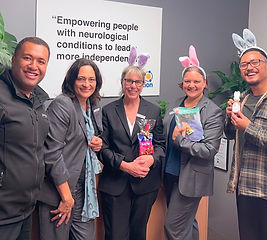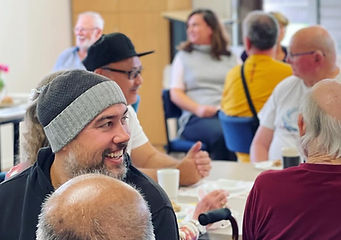top of page
Registered Charity (CC10037) | Phone +64 9 836 6830 | Email admin@neuroconnection.co.nz
.jpg)

> Sharing Space
Throughout the year we host special gatherings such as our Whānau BBQ, soup days, and Easter celebrations, where everyone can share good company.
We also mark important occasions with celebration days and acknowledgements, recognising the diverse journeys and milestones within our community.
Our community activities are about building connection, uplifting one another, and ensuring everyone feels a sense of belonging.
> Our Care Network
Our work connects with many people - from clients and whānau to community partners and decision makers. Our Care Network outlines who we engage with.
> View Our Care Network here.
Be part of our community updates, events, and impact
bottom of page